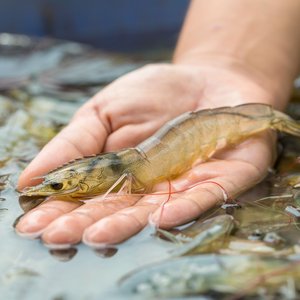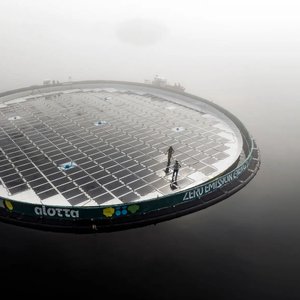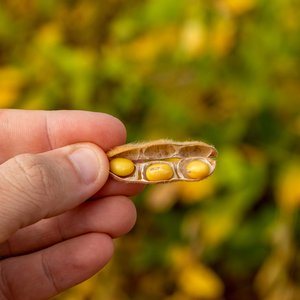Equipping fish farmers with the knowledge and machinery to produce their own low-cost, quality fish feed is increasing the productivity of aquaculture in rural Bangladesh.
“In the past, we did not have fish feed here. We would use mustard oil cake to make ordinary-quality feed at home. Most fish farmers complained that production in their farms was very low,” recalls Salim, whose income supports his mother, wife and eight-year-old son.
Those in search of commercially produced feed with a high protein content are often forced to travel long distances along damaged and dangerous roads to the nearest market.
Frustrated with the cost and challenges of accessing quality feed, Salim and the 22 members of the village’s Shapla Fish Farmer’s Association approached the United States Agency for International Development (USAID)-funded Aquaculture for Income and Nutrition (AIN) project, which they heard was offering training on fish feed production.
AIN aims to improve household income and nutrition through providing cost-sharing investments and training on aquaculture.
Salim attended a training session on topics such as feed compositions for different species, feed-to-body-weight ratios and how to operate a semi-automatic feed mill. The project also taught Salim how to act as a trainer himself in order to teach others in the association, and provided participants with record books to track the growth of their fish.
After Salim shared his learning with the other members, the association was motivated to purchase the equipment for a semi-automatic feed mill for the village in June 2015 to allow them to produce their own feed for a lower price.
AIN contributed 50% of the cost for the machines that together form the feed mill. Along with investing the majority of the remaining half of the funds, Salim provided the tin shed and land on which it stands—making him the majority shareholder and responsible for the feed mill’s operation.
“After installing these feed machines, we were trained to operate and maintain both the diesel shallow engines and electric engines for these machines,” explains Salim, who purchases and transports the feed ingredients from the region’s capital, Khulna.
Farmers then buy the raw materials directly from Salim and pay a small fee to use the mill to compress the ingredients into pellets for mature fish or grind them into powder for juveniles. Shareholders from the association divide the profits according to their original contribution.
“The main benefit of having such a mill is that I can assure the amount of protein in the feed, and that it is of good quality. After using this feed, my fish have good growth. Now, in 10 days they grow as much as they used to in 15 days. I also don’t pay as much for the feed as I used to,” says Swanpan.
The mill has produced 2750 kilograms of feed since it opened in June 2015 and is now supplying 25 fish farmers in the area.
Since January 2014, AIN has established 62 feed mills and trained 430 farmers in feed production.
In a country where more than a third of the population lives below the poverty line, AIN is improving the productivity of household and commercial fish farms to help secure income and nutrition for rural farmers and their families.
Source: World Fish. Read the full article.










